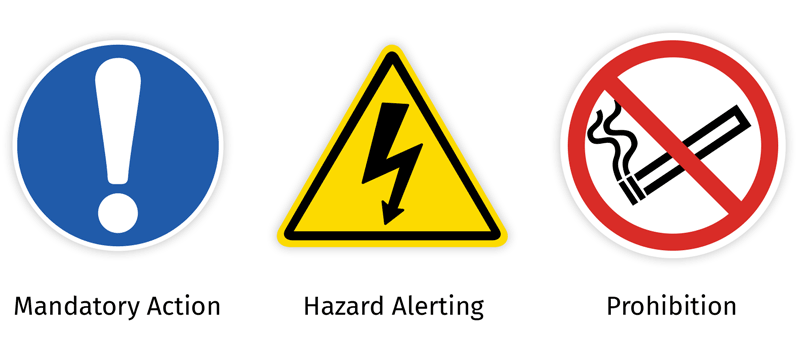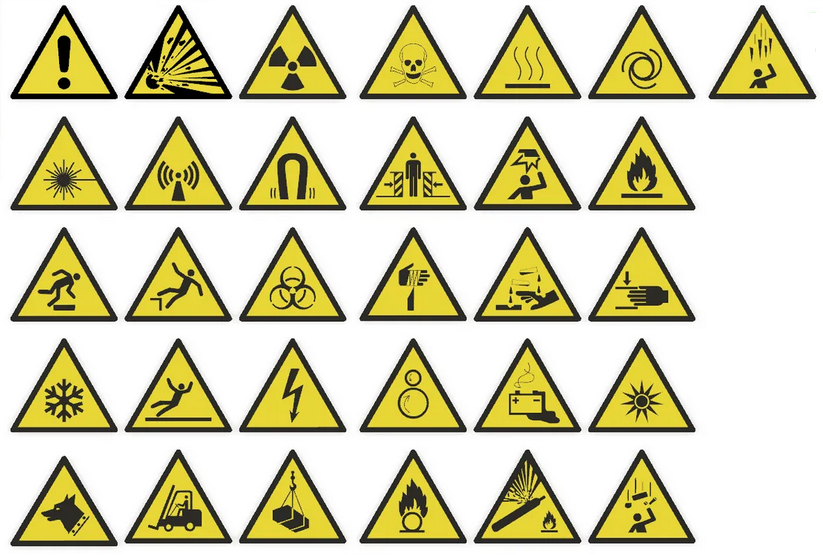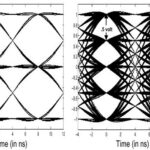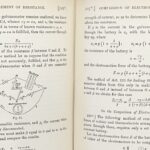The use of graphic symbols may be the trend and save space, but we need to acknowledge their potential downsides as well.
I was surfing the web looking for some specialty tools and landed on a site that had many of the ones I needed. All was well until I started to go further on the site into the specifics of the products, features, and ordering specifics, and then I got stuck.
Why so? I couldn’t be sure what the large array of mysterious icons on the site represented, and only some of them presented text when you hovered over them. Otherwise, the hapless potential customer (me) was disoriented while trying to decode the many symbols.
I’m seeing more of this trend and have mixed feelings about it. Certainly, the icons do take up less screen space than regular text. Also, they can act as a universal language, with the same icon working worldwide. Further, the “younger” generation (of which I am definitely not a part) is very comfortable with these and actually prefers them; maybe it’s because reading words and phrases is such a chore?
For example, a recent article in The Wall Street Journal, “For Warehouse Workers, Technology Starts to Look More Like Home,” noted that smartphones, apps, and even emojis are finding their way to logistics operations as companies look to lure workers raised on mobile tech. A manager at a multi-warehouse fulfillment center noted that for on-the-floor workers, “You’re not reading a number, you’re looking for an emoji…and they’re recognizable because they’re used all the time – these are symbols we’re all familiar with.”
To which I say, “Maybe yes, maybe no.” There’s the well-known winking smiley face, 😉, but even that is just one of many face-related ones. Still, there are many times I see icons that I don’t recognize, and it’s even worse with emojis. Yes, they may be cute and insightful, but given how many are in use, it’s like learning another language by watching their movies – far easier said than done.
Some of the emojis (or should that be “emojii”?) are formally recognized under the Unicode Consortium, a standards-setting body, and there are sites with lists of both official and informal ones, including one of which is exhaustive with several hundred such images.
ISO Standard symbols
There are also many symbols defined under the ISO (International Organization for Standardization). ISO safety symbols are a subset of the many ISO symbols that have been developed to provide information in a variety of use cases. There are three types of ISO safety symbols: mandatory action, hazard alerting, and prohibition (Figure 1).

- Mandatory action symbols display actions that should be taken to avoid potential hazards. These images must be white inside blue surrounding circles.
- Hazard alerting symbols, to be ISO compliant, must be contained in a yellow equilateral triangle with a black interior border.
- Prohibition symbols must have a red circle with a 45° slash and a black image on a white background. ISO prohibition symbols convey actions that should not be taken.
So far, this all makes sense, but the proliferation of these safety symbols leads to some potential for confusion. For example, Figure 2 shows some — not all — of the ISO standard symbols under the Hazard Alerting category.

Note that there are many other symbols in the Mandatory Action and Prohibition categories, as well as hundreds more for non-safety-related advisories and alerts.

But there’s a problem…
Pretty soon, it all gets very complicated, and what seems in many ways like a good solution to the problem of clear communication soon becomes an entwined and intricate problem of its own.
Most obviously, the meaning of a symbol can change or become obsolete. Consider the line-art graphic symbol in the Microsoft applications and other places for saving content (Figure 3). (Note that this is not fully standardized, and non-Microsoft applications and websites use variations of this basic image.) The problem with this simple, basic icon is that what is derived from, and so represents, is meaningless to almost anyone under the age of, say, 30 since the floppy disk is now an obsolete storage medium.
The situation is analogous in some ways to the famous Rosetta Stone, uncovered in 1799 by Napolean’s troops in Egypt and subsequently captured by the British (Figure 4).

The stone is inscribed with a royal decree with nearly identical texts in three languages, with 14 lines in hieroglyphs (suitable for a priestly decree), 32 lines in Demotic (the cursive Egyptian script used for daily purposes), and 54 lines in ancient Greek (the language of the administration, as the rulers of Egypt at this point were Greco-Macedonian after Alexander the Great’s conquest).
At the time it was discovered, no one knew how to read ancient Egyptian hieroglyphs; they were a frustrating mystery. Since the inscriptions say the same thing in three different scripts, and scholars could still read ancient Greek, the Rosetta Stone became a valuable key to deciphering the hieroglyphs. The phrase “it’s like the Rosetta stone” is now a convenient phrase when used referring to a modern-day guide, implying it’s a ready-to-go dictionary, which makes the translation task simple.
But that’s the case at all. In fact, it took over twenty years of research, investigating, insight, intuition, luck, and very hard work to use the stone’s texts as a starting guide to begin deciphering those ancient Egyptian hieroglyphs.
My worry is that the extensive use of icons and emoji will lead us to a situation similar to that faced when decoding Egyptian hieroglyphs. Will an easy-to-use equivalent to the Rosetta stone be available ten or twenty years from now? Who will maintain and update it? Will we be faced with many such symbols and only be able to guess what they mean?
We know that knowledge and understanding are hard to gain but easy to lose. The proliferation of icons and emoji may seem like a cute, smart, and trendy idea now, but what happens in a few years?
Perhaps we’ll face a situation like the one in the classic 1959 science-fiction work A Canticle for Leibowitz by Walter M. Miller Jr. In this post-apocalypse novel, learning and knowledge are lost, but a dedicated, isolated group of monks strive to understand and preserve the surviving remnants of scientific knowledge. Among the documents they have uncovered and are puzzled by is a routine grocery-shopping list (“pound pastrami, can kraut, six bagels–bring home for Emma”), as the disjoint items on the list seem to have no common theme or relationship.
So go ahead and use those icons and emojis, but recognize that what makes sense to you may not make sense to others just a few years from now. Worse, they may not even make sense to others today.
Related EE World Content
Gravity-assist “Slingshot,” Part 2: Application
Rosetta to sleep through loneliest leg of comet mission
Egypt Says Scan of King Tut’s Burial Tomb Shows Hidden Rooms
Chevrolet’s Newest Press Release is Written in Emoji
File Conversion: Updating Technology And Security
Say Goodbye to the iPhone’s Headphone Jack
External References
Zedge, “Emojipedia”
ProSettings.com, “List of Emojis”
Wikipedia, “Rosetta Stone”
British Museum, “Everything you ever wanted to know about the Rosetta Stone”
A&E Television Networks, LLC/History, “What Is the Rosetta Stone?”
Wikipedia, “A Canticle for Leibowitz”







Leave a Reply
You must be logged in to post a comment.